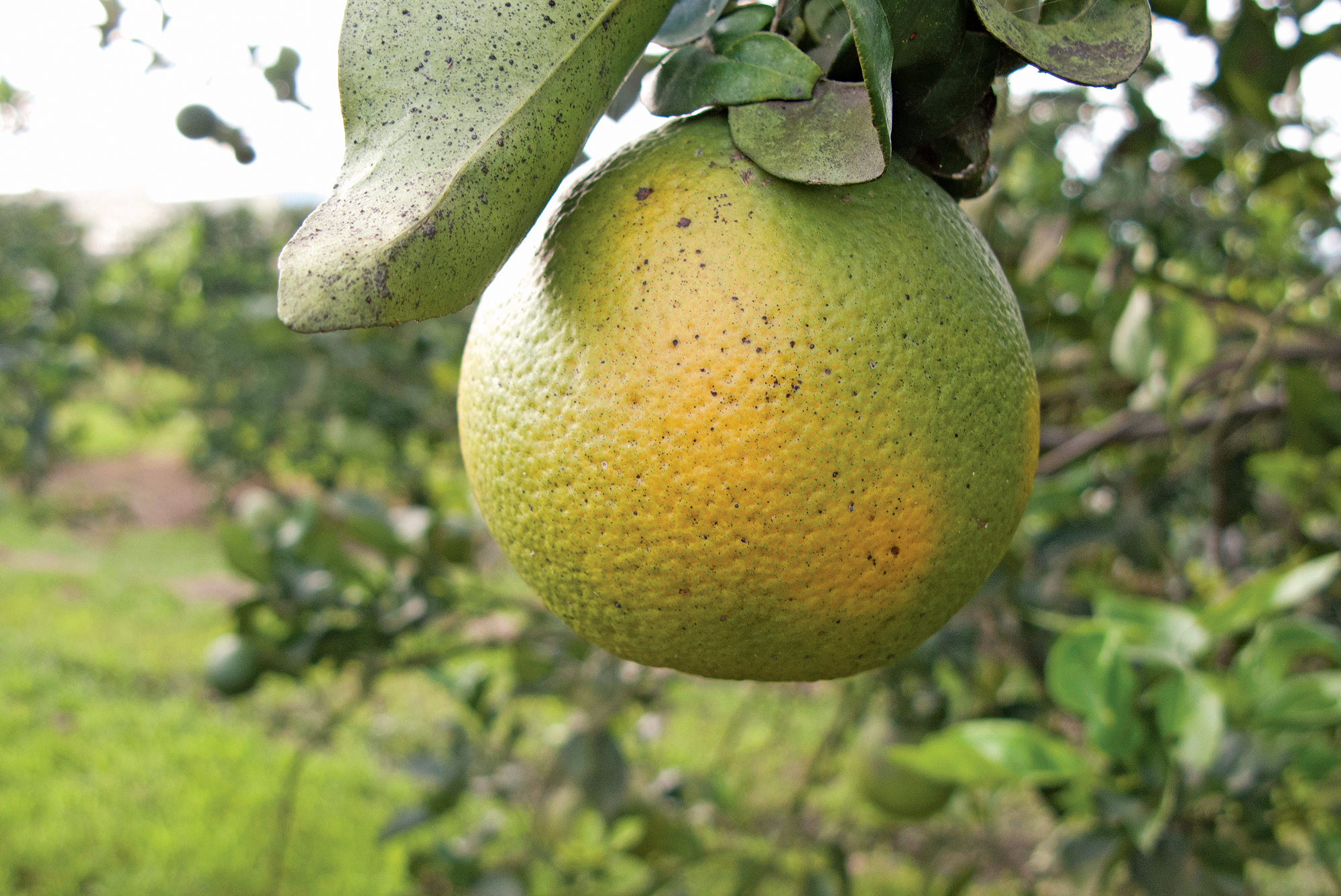The Department of Agriculture, Land Reform and Rural Development would like to send an alert
to citrus farmers regarding Asian Citrus Greening disease, also known as Huanglongbing (HLB).
The disease is caused by the pathogen (bacteria), Candidatutus Liberibacter asiaticus, which is
insect vector-transmitted by the Asian citrus psyllid (ACP), Diaphorina citri and it poses a huge
threat to all citrus industries in the world.
Symptoms on leaves and shoot include yellow shoots, asymmetric, mottled leaves, small
upright chlorotic leaves, out of phase flushing and branch dieback. Flower and fruit symptoms
include unseasonal and heavy flowering on diseased branches, small, lopsided, bitter-tasting
fruit with small, brown, aborted seeds and uneven colouring at maturity and excessive fruit drop.
The sooty mould growth resulting from excess honeydew production can also affect the plants’
ability to photosynthesise, which can affect overall plant health.
Though not present in South Africa currently, the Asian Citrus Greening poses a serious threat
to the citrus production in South Africa, the Southern African Development Community (SADC)
region and the entire continent. It is the most devastating disease of citrus worldwide, causing
serious yield losses to producers in countries where it currently occurs. In the African continent,
this specific strain has already been detected in Ethiopia and Kenya and the insect vector has
been detected in Kenya and Tanzania. The occurrence of this disease, together with its primary
vector, is a major concern to the continent because infected citrus trees cannot produce edible
fruit and will decline and die; thus, a major concern for food security and the loss of market
access due to a major loss in the production of required fruit volumes.
Considering the socio-economic value and the impact that citrus production has in South Africa,
it is imperative for all role players such as farmers, nurseries, international travelers, importers,
researchers and members of the public to adhere to the country’s phytosanitary regulatory
framework. This will minimise the introduction, establishment and spread of this disease in
South Africa and the SADC region. The introduction of this disease in the SADC region will have
devastating consequences for the citrus industry, which is already under immense pressure,
dealing with other economically important pests and diseases, such as Citrus black spot (CBS),
False codling moth (FCM) and fruit flies (FF).
The department, in collaboration with the citrus industry, has established an HLB Steering
Committee, which has developed a Preparedness and Response Action Plan and related
measures to minimise the risks of introduction of HLB and ACP in South Africa.
The minster has approved and published the relevant Control Measures in the Government
Gazette No. 44188 R. 121 of 12 February 2021, in accordance with the provisions of the
Agricultural Pests Act, 1983 (Act No.36 of 1983). These regulatory interventions are to ensure
preparedness and response to any possible introduction, establishment and spread of this
disease.
A national survey to enhance the chances for early detection of the disease as well as the
vector forms part of the strategic plan of the DALRRD. Moreover, departmental officials have
met with their counterparts in Kenya, to map a way forward on how to deal with HLB and ACP in
Kenya and to minimise its introduction into Southern Africa.
It is imperative that all role players involved in the citrus industry observe all precautionary
measures in terms of the relevant legislative prescripts to help minimise the risks of introduction
of Asian Citrus Greening and its primary vector Asian citrus psyllid into South Africa. The
importers of plants and plant products must follow all the proper import procedures in terms of
the Agricultural Pests Act, 1983 (Act No. 36 of 1983), to help minimise the introduction,
establishment and spread of any potential harmful species in the country




